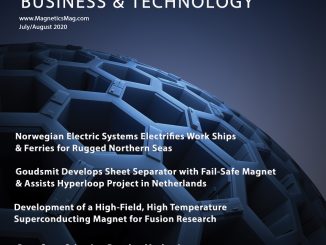By Dr. Stan Trout | Spontaneous Materials
As I have mentioned in an earlier blog, my project for 2016 is to list and describe the many types of mistakes made with permanent magnets. So this is the first of a series of blogs. My intent is to help engineers in the future avoid the mistakes made in the past. While I admit that I have not made all these mistakes myself, I have seen all of them firsthand.
As a consultant I deal with many of these problems on a regular and recurring basis. If I am lucky, I am brought in early enough to help people avoid the issues completely. But more typically, I am brought in after there is a problem to solve.
I will give a couple examples for each type of error and hope that my readers may also contribute their experiences in the comments section.
The first two mistakes on my list are:
- Overlooking thermal properties
- Failing to saturate fully or correctly
There are several ways in which thermal properties come into play with permanent magnets. I’ll just mention two of them that are critical but not so widely discussed. The first is irreversible loss, which I’ll define as a loss in magnetic flux after exposure to an elevated temperature for some length of time. This type of loss is primarily found in rare earth magnets. The loss can be several percent and exact value depends on the temperature, the time at temperature and the operating point or loadline of the magnet. This last point means that the actual losses observed are very application dependent, i.e. difficult to predict without a good measurement. I have seen several projects where these losses were initially ignored, only to be surprised very late in the design cycle when irreversible losses appear in an aging test. It is best to include this effect early in the design cycle. Some people include an aging step after magnetization to get the losses out of the way, making the final product more stable over time.
By the way, irreversible losses can also appear due to radiation or exposure to adverse magnetic fields, or any combination of these three effects. Superman only had to worry about kryptonite, but we have to worry about three ways that a magnet can be partially demagnetized in service.
The second thermal topic is the selection of the temperature range for the device in question. Typically, a temperature range is established early in the design cycle, say -40°C to 150°C. Sometimes a lot of thought goes into this decision, but not always. It is easy to copy the thermal window from the last design, or to say that the device should tolerate the same range of temperatures as all the materials used to make the device, whether it is actually necessary or not. Sometimes the temperature range is imposed by the ultimate customer, without much discussion. However, it is important to realize that both the high and low temperature extremes can either rule in or rule out various permanent magnet materials. For example, because the Hci of ferrites decreases as the temperature decreases, a very low operating temperature requirement can disqualify ferrite. Similarly, NdFeB can be disqualified on the high temperature side. If the temperature range is legitimate, then this is good engineering. But if the temperature range is decided arbitrarily, then the material choices can be unnecessarily restricted by this single choice.
Chose the temperature range thoughtfully.
The most common problem with magnetizing is not using enough field to fully saturate the part. This can happen because of a combination of a very large part and a small magnetizer. Beyond that, some people deliberately do not fully magnetize a part to reduce the available magnetic flux, perhaps to hit a specific target value. This is a particularly bad idea. Incompletely magnetized parts generally do not achieve their full Hci and tend to have problems with thermal stability, i.e. the irreversible losses tend to be larger than normal. It is far better to fully magnetize the part and if reducing the magnetization is necessary, to do it either by exposure to elevated temperatures or with a mild magnetic knockdown, or both. This is far more stable.
A less common problem with magnetizing may occur with isotropic materials, like bonded NdFeB. Because isotropic materials can be magnetized in any direction, the actual direction of the magnetization is determined in the magnetization step. If the magnetizing fixture has been poorly designed or is being incorrectly used, the magnetic flux may not follow the path that we would like. This type of error will lead to a reduced magnetization level and possibly some additional and subtle problems in the device, like low torque or cogging in motors.
Magnetize with care.
Two down, fifteen to go.
 About the Author
About the Author
Dr. Stan Trout has more than 35 years’ experience in the permanent magnet and rare earth industries. Dr. Trout has a B.S. in Physics from Lafayette College and a Ph.D. in Metallurgy and Materials Science from the University of Pennsylvania. Stan is a contributing columnist for Magnetics Business & Technology magazine. Spontaneous Materials, his consultancy, provides practical solutions in magnetic materials, the rare earths, technical training and technical writing. He can be reached at strout@ieee.org.



